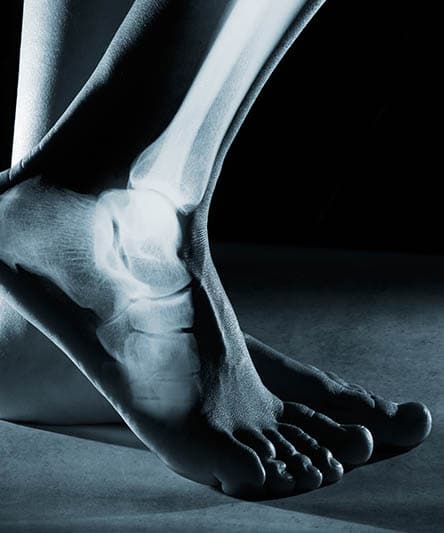Ankle Pain
What is it?
Ankle pain refers to any type of pain or discomfort that arises in or around the ankle. There are many different causes of ankle pain, ranging from injuries to a number of different medical conditions. Treatment options are dependent on the cause of ankle pain, which has to be determined before any specific treatment can be recommended.
Ankle Sprain
Ankle sprains occur when ligaments get overstretched or tear, usually through excessive stress on the ligaments. One or more ligaments can be injured during a sprain.
Treatment usually involves rest, ice, compression and immobilization of the ankle. Non-steroidal anti-inflammatory drugs (NSAIDs) are the most common pharmacological approach.
Ankle Tendon Problems
- Achilles
tendinitis is a painful inflammatory condition of the Achilles tendon, which connects the calf muscle to the back of the heel. It occurs mainly due to overuse and due to the continuous load the Achilles tendon is subjected to, be it in everyday life or in most sports, can lead to swelling and small tears in the tendon. The first treatment approach is the reduction of pain and swelling with rest, ice, compression and elevation (RICE) of the affected area. NSAIDs are the first choice in pharmacological treatments. Gentle stretching to avoid stiffness is helpful asis avoiding further loads on the tendon until the tendon is healed. A corticosteroid injection into the tendon sheath with ultrasound guidance is helpful to reduce tendon inflammation when more conservative treatments do not help the pain.
- Achilles tendinopathy is a painful long-term degenerative condition of the Achilles tendon that occurs when the healing rate is less than the injury rate. There is a loss of the elasticity (collagen) within the tendon due to repetitive overloading. This condition does not
respond well to anti-inflammatory treatments and is best treated with functional rehabilitation, especially eccentric physical therapy (strengthening while stretching the tendon). Treatments for tendinopathy that does not respond to physical therapy include dry needling of the tendon orplatelet-rich plasma injections.
- Achilles tendon rupture can occur if there is a sudden overload or trauma to the Achilles tendon strong enough to tear it. Achilles tendon ruptures occur most often to athletes or to those who lift heavy objects for a living. A tendon rupture is a risk of
a steroid injection into the body of the tendon. If the tendon is completely torn, surgery may be needed.
Bone Fractures
Bone fractures can happen as a consequence of an impact or another traumatic injury. The severity of bone fractures is variable and will determine the type of treatment needed. Immobilization via a
Bursitis
Bursitis is the inflammation of the bursa, a sac filled with lubricating fluid, which decreases rubbing, friction, and irritation and acts as a cushion between bones and other moving body parts such as muscles, tendons, or skin. In the ankle, the retrocalcaneal bursa, located at the junction of the Achilles tendon with the heel bone, is the most common site of bursitis. Inflammation of this bursa can be caused by overuse and is often linked to Achilles tendinitis. Ankle bursitis causes pain and tenderness around the ankle. It can be treated through rest, ice, compression of the area, and elevation of the ankle (RICE). Pharmacological approaches include NSAIDs, such as ibuprofen and naproxen, or local corticosteroid injection with ultrasound guidance to the affected area.
Contact Us
Eugene
Hours:
Monday............ 8:00am - 5:00pm
Tuesday............ 8:00am - 5:00pm
Wednesday............ 8:00am - 5:00pm
Thursday............ 8:00am - 5:00pm
Friday............ 8:00am - 4:00pm (Only available on phones)
Closed for lunch from 12pm - 1pm and closed until 1:30pm on Tuesdays
© Copyright 2025 Eugene Foot and Ankle. All Rights Reserved. | Privacy Policy.


